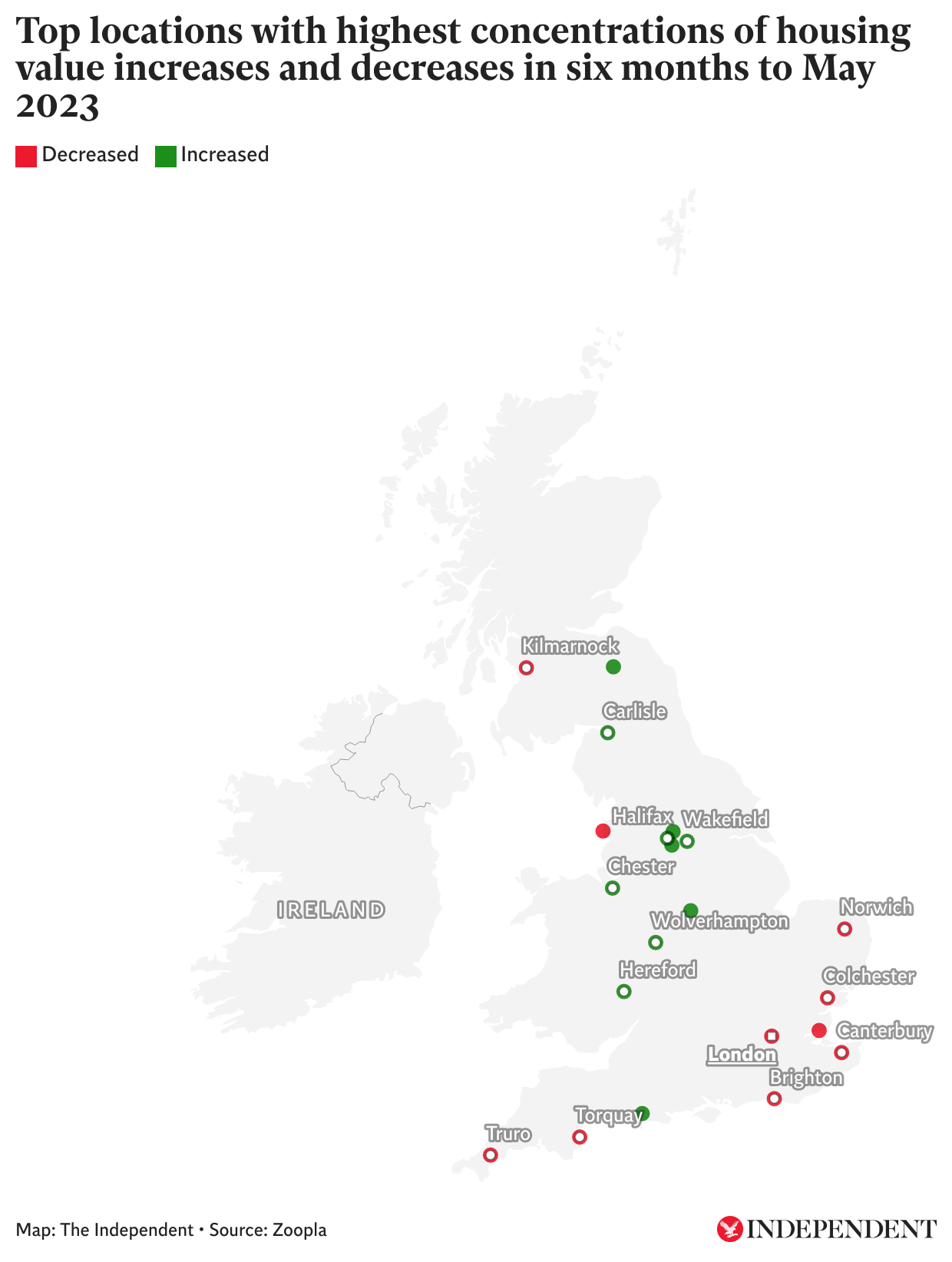Mapped: Areas with biggest house price rises and falls revealed
New research by Zoopla’s shows two thirds of homeowners saw the value of their home increase in past year
Your support helps us to tell the story
From reproductive rights to climate change to Big Tech, The Independent is on the ground when the story is developing. Whether it's investigating the financials of Elon Musk's pro-Trump PAC or producing our latest documentary, 'The A Word', which shines a light on the American women fighting for reproductive rights, we know how important it is to parse out the facts from the messaging.
At such a critical moment in US history, we need reporters on the ground. Your donation allows us to keep sending journalists to speak to both sides of the story.
The Independent is trusted by Americans across the entire political spectrum. And unlike many other quality news outlets, we choose not to lock Americans out of our reporting and analysis with paywalls. We believe quality journalism should be available to everyone, paid for by those who can afford it.
Your support makes all the difference.Two-thirds of homeowners saw their house value go up in the 12 months to May, new research shows, offering some hope to homeowners facing further mortgage squeezes.
But not all were so lucky, with almost one in five (18 per cent) home prices decreasing during the same period and one in six (16 per cent) seeing no change, according to statistics from house valuation website Zoopla.
Those who saw price increases (66 per cent) saw them rise by an average of £7,000, equal to £19 per day. Homeowners who experienced a decline saw an average fall of £7,700 or £21 per day.
The new research is based on Zoopla’s valuation estimate for homes across the UK, collated through its online “my home” tool which provides homeowners with an estimated property value.
According to the findings, coastal areas in southern England encountered the most significant decreases after the initial “race for space” that saw buyers seek out property as businesses moved towards home-working died down.

At 67 per cent, Halifax in Yorkshire and the Humber had the highest concentration of housing value increases, closely followed by Derby and Wakefield at 65 per cent.
At the other end of the scale, West Central London saw the most decreases at 68 per cent. This was followed by Colchester in Essex at 67 per cent.
Richard Donnell, executive director at Zoopla, said: “With a value of £10.7 trillion, the housing market is a huge part of the nation’s wealth.
“Everyone’s home has its own value and trajectory of how that value is changing over time.
“The value a homeowner can get for their home unlocks the options for their next move or impacts how good a rate they might get when they remortgage.”
In June, house prices fell by 3.5 per cent annually as interest rates soared to 6.37 per cent for the average two-year fixed-year mortgage deal. During the same month, the average UK house price was £262,239.
And economists warned the pain could continue, with the UK heading for a mortgage rate “disaster” as the average five-year fixed-rate deal increased above 6 per cent for the first time since November.
Here are the top locations with the highest concentrations of housing value increases in the six months to May 2023:
1. Halifax, Yorkshire and the Humber, 67%
=2. Derby, East Midlands, 65%
=2. Wakefield, Yorkshire and the Humber, 65%
4. Huddersfield, Yorkshire and the Humber, 59%
5. Wolverhampton, West Midlands, 57%
6. Dorchester, South East, 56%
7. Chester, North West, 54%
8. Galashiels, Scotland, 53%
=9. Hereford, West Midlands, 52%
=9. Carlisle, North West, 52%
=9. Bradford, Yorkshire and the Humber, 52%.
Whilst a list of the top locations with the highest concentrations of housing value decreases can be found below:
1. West Central London, London, 68%
2. Colchester, East of England, 67%
3. Canterbury, South East, 66%
4. Kilmarnock, Scotland, 65%
5. Norwich, East of England, 64%
6. Brighton, South East, 63%
7. Southend-on-Sea, East of England, 62%
=8. Torquay, South West, 59%
=8. Truro, South West, 59%
10. Blackpool, North West, 58%.






Join our commenting forum
Join thought-provoking conversations, follow other Independent readers and see their replies
Comments